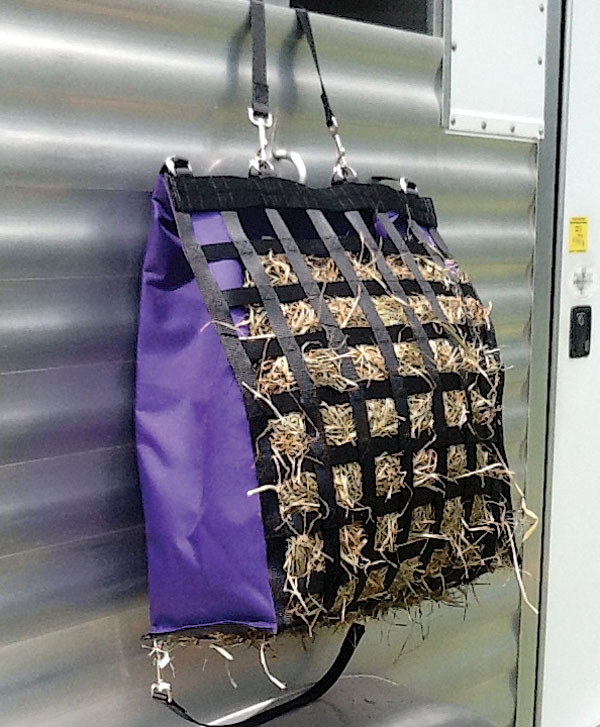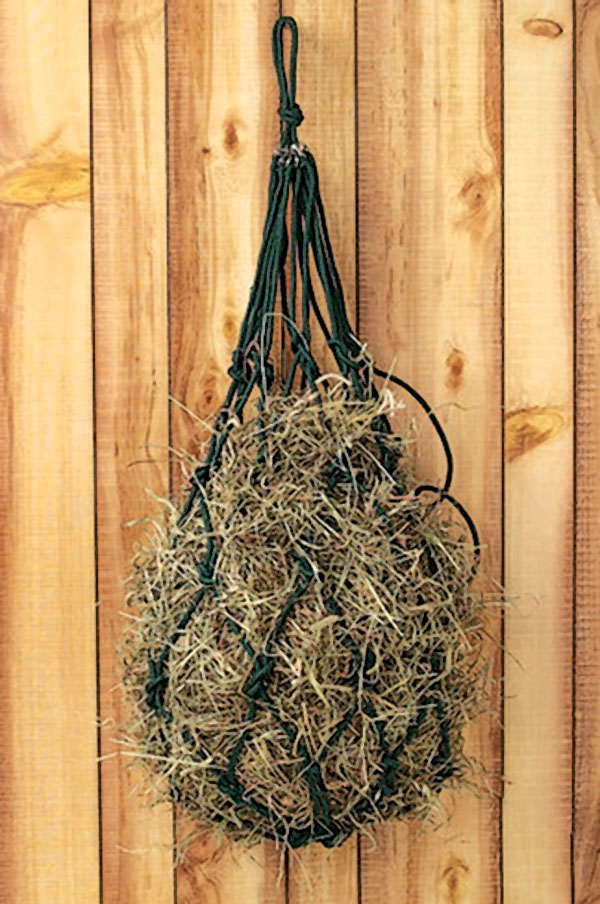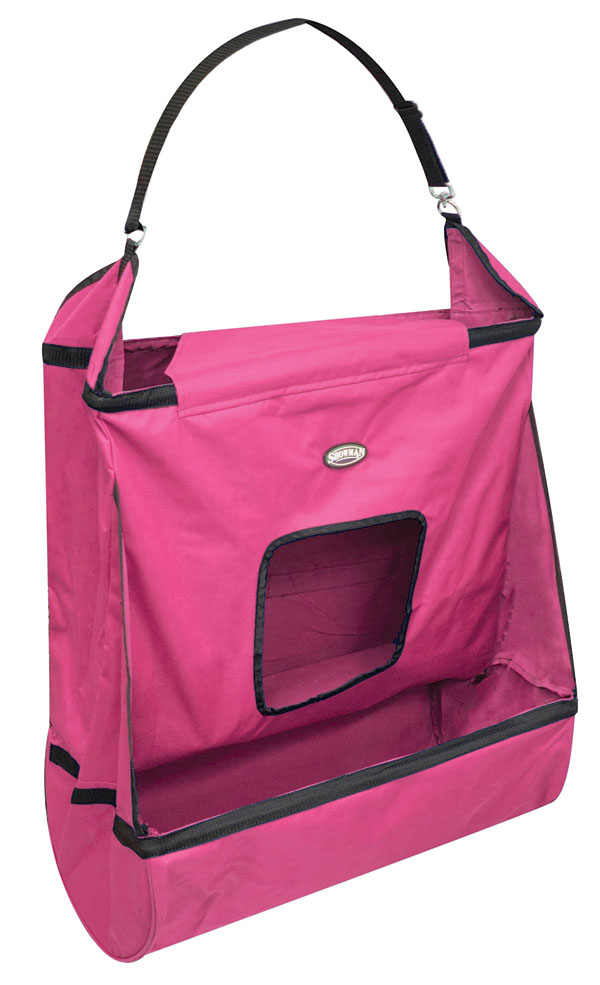SLOW, STEADY
Model: NibbleNet.
Maker: Thin Air Canvas.
Why buy: The 1½-inch-wide openings slow your horse’s consumption to keep him occupied and avoid gastrointestinal discomfort on the road.
Cool feature: Choose from the 3- or 9-inch-depth variety for snack- or regular-sized feedings.
More info: (772) 463-8493; thinaircanvas.com.
Price: From $55.99 to $79.99, depending on bag depth.

TRIED & TRUE
Model: Cotton rope hay net.
Maker: Dover Saddlery.
Why buy: The knotted cotton rope is strong, durable, and large enough to accommodate a sizable amount of hay for easy trailer travel.
Cool feature: It’s available in six colors, including black, white, purple, dark green, navy, and royal blue.
More info: (800) 406-8204; doversaddlery.com.
Price: $14.99

GOT GRAIN?
Model: Showman nylon portable hay, grain feeder.
Maker: Chick’s Saddlery.
Why buy: Keep hay and grain in one location, minimizing waste and streamlining feeding; an angled design and bar top make loading easy.
Cool features: The adjustable nylon straps and four bright color options allow for customization.
More info: (800) 444-2441; chicksaddlery.com.
Price: $20.99

SINGLE SERVE
Model: Slow-feed hay bag.
Maker: Jeffers Equine.
Why buy: Place up to two large flakes in the durable bag for one-time feeding; the adjustable, removable straps allow for easy hanging.
Cool feature: The 2-by-2-inch web construction curtails hay waste and slows your horse’s feeding.
More info: (800) 533-3377; jefferspet.com.
Price: $25.95

WHY BUY
A hay bag is a convenient way to keep your horse’s feed ration in one place, without waste or mess. Especially important for horse owners who travel, it’s also practical as an everyday feeding solution. Here are four reasons to buy.
Keep your horse’s tummy happy. Slow-feeder designs are particularly effective at slowing your horse’s feed consumption. This’ll improve his gastrointestinal health, as he’ll have a steady supply of forage throughout the day as if he were grazing.
Improve feeding accuracy. Hay is much easier to weigh in bags, and measuring rations takes the guessing game out of feeding. You’ll know exactly how much forage your horse consumes each day and will be better able to accommodate his needs, whether those include weight loss, gain, or maintenance.
Put cash in your pocket. Hanging nets and bags limit waste, which means you’ll save money when hay stays in its place rather than scattered on the stall floor.
Save yourself time. Fill the bag at night for quick feeding in the morning. It’ll alleviate stress if you have one less chore to complete the morning of a show or busy workday.






